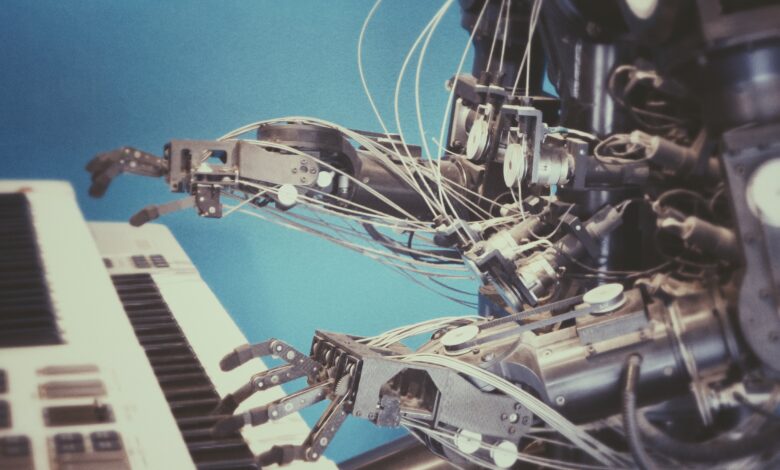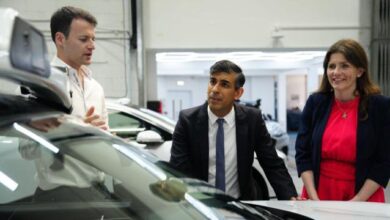
2023 will forever be remembered as the year AI moved from science fiction to science fact.
While some ponder whether humanity will exist in five years (or worse still, whether brands will exist) brands and marketeers need to come to grips with the potential of AI and try to understand how it can be harnessed to drive commercial benefits in the short and medium term.
Creativity is the beating heart of the brand and advertising industry and, for the first time in human history, creativity itself is under threat. AI is unleashing a raft of new tools and approaches that will both collapse the cost of production while unleashing a tsunami of creativity and personalisation never before imagined.
For those who cling to the comfort blanket that creativity is a divine-human capability, you have overslept. It is now time to wake up. From a consumer perspective, the perceived creative capability of Gen AI has almost reached, and in some cases surpassed that of many industry creatives. In the future many dedicated creative jobs will cease to exist, with the best of them moving to being ‘creative AI prompters’.
If you have time out from a busy schedule of startups pitching new AI tools that will take your job, read on to understand how, from a music and voice perspective, AI may impact the advertising industry in the next 12 months…
Voice overs
The best AI voice generators are already barely distinguishable from human output. It is now possible to generate a highly convincing new ‘voice model’ of any actor (or yourself) from a 5-minute sample of spoken word. These models can then instantly turn any written text into a highly convincing narrative, in any language, and then be simply modulated to convey any desired emotion (anger, excitement, honesty etc) – https://www.youtube.com/watch?v=oHzuJLCNwCE .
This represents both an opportunity and a threat to actors. On the one hand, a brand could settle on a global brand voice (model) and use this across all marketing, dispensing with the need for actors altogether. For those actors with a distinctive and in-demand voice, the option of creating an official AI voice offers them the ability to take on an unlimited volume of projects in multiple languages – without ever getting out of bed.
Production music
Up until around 6 months ago, music created by AI was typically of low-grade production quality; but this field is developing extremely rapidly and the best of these can now generate convincing soundtracks to order. In time these will offer the ability to sync with any visual creative.
Production music libraries are most under threat as every brand will be able to ‘commission’ and create an original soundtrack to any creative in a matter of minutes without any human input (other than the brief itself).
There are many companies in this field, with recent entrants being Stable Audio (Stable Diffusion) and MusicLM (Google). It is currently too early to predict what size an impact this will have on the production music industry, but we believe it will ultimately be devastating.
Battles are raging over the rights and wrongs of the data used to train the models – but the technology is only moving in one direction. This is an area where there are significant opportunities for brands to reduce cost and increase effectiveness without navigating the labyrinthine world of catalogs and music rights.
Cover songs
One of the most contentious music-related applications of AI is in creating new cover versions of existing songs or creating entirely new ones in seconds. Companies such as www.Voicify.ai enable anyone to instantly replace the original vocal on any track with a replacement. If you want SpongeBob SquarePants singing Adele, Donald Trump singing Taylor Swift or yourself covering a Drake track, it only takes a few clicks.
There is a lot of legal negotiation currently underway between these AI services and rightsholders at the moment but, on the whole, rightsholders are accepting the inevitable and are seeking to strike deals with these services. It seems likely that a model will emerge over the coming months enabling ‘official’ artist AI voices to be used for commercial purposes.
A future beckons where a brand could potentially have any artist (living or dead) provide the backing track to a commercial with a brand-appropriate soundtrack and lyrics. Much like Just Eat/Snoop Dogg but with unlimited instantaneous permutations at the click of a mouse.
Implications going forward
There is an arms race currently underway in all areas of AI – from foundation models, chatbots, virtual employees, marketing, and creative (including music). Surprising as it may seem, we would advise brands to keep their powder dry in respect of music AI for at least the next 6 months.
The next generation of foundation models is just months away and they are widely expected to be 5-10 times more powerful than existing models (e.g. ChatGPT) – and seamless in their ability to both ingest and create text, music, images, video, code, presentations etc. This joined-up AI means multiple AI applications will soon be available in single integrated products.
By 2025, AI will be able to create an entire marketing campaign (including instant generation of the script, voiceover, video creative, and music) – using just the existing brand name and campaign brief as a prompt.
By all means, keep up to speed with the progression of Gen AI in music and marketing, but also be conscious that we are just at the beginning. If you make fundamental changes to your current approach today, this may shortly be outdated.
We are about to enter a world where there is a tyranny of choice in creativity. Gen AI options for brands are about to multiply exponentially but the fundamentals of needing to stay true to the brand and be distinctively on brand at all times will not change.





